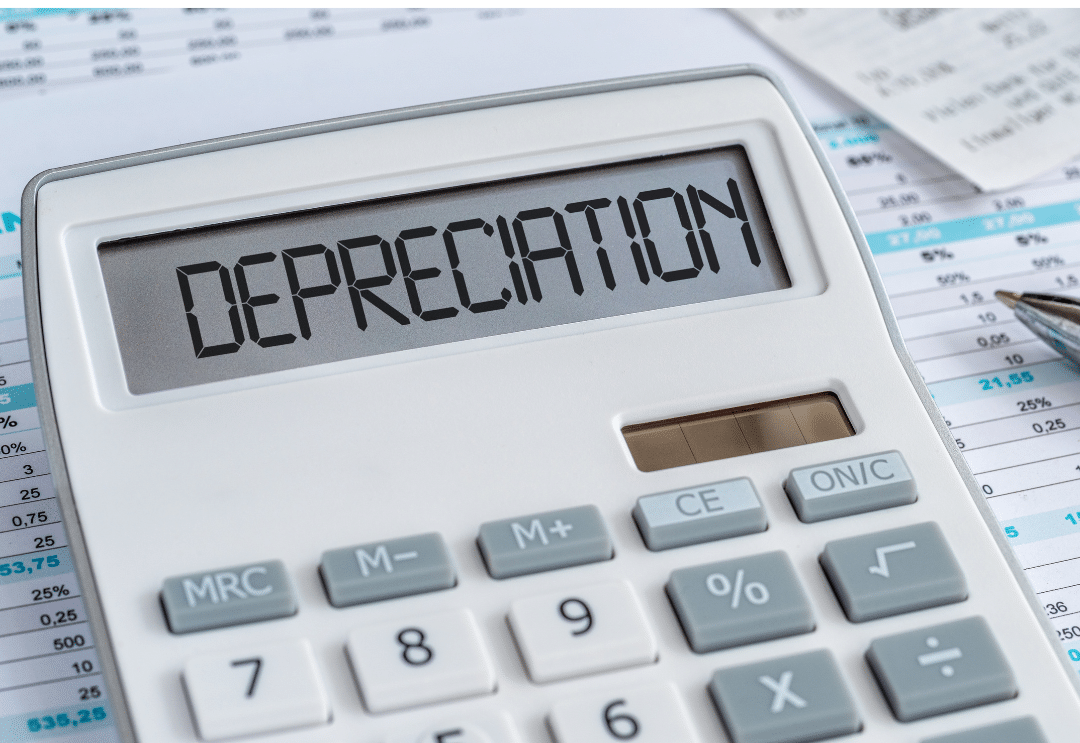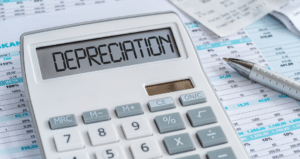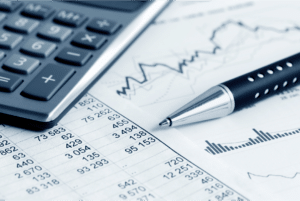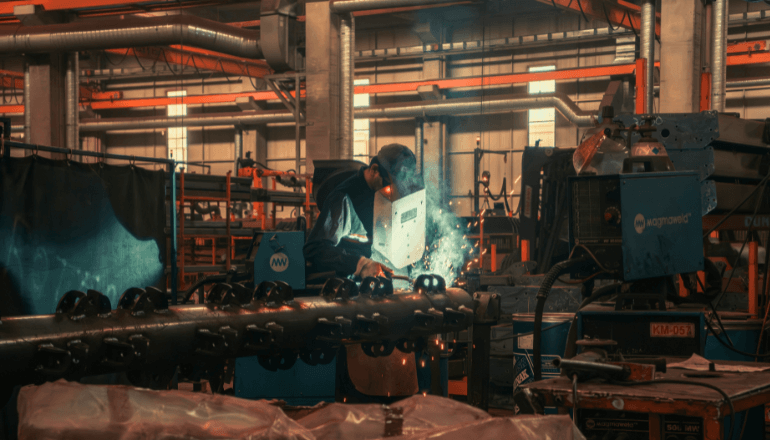There are tons of financial concepts you need to understand when running a retail business, and straight-line depreciation is one of them. For many retail business owners, the idea of item or asset depreciation can seem daunting and complicated when it comes time to get your accounting in order. As a result, it’s often tempting to ignore this aspect of financial reporting. However, doing so can actually cost you more money in the long run and potentially lead to inaccurate financial statements.
Below, we’ll demystify the concept of straight-line depreciation and its role in financial reporting. We’ll explore what straight-line depreciation is when you should use it, its advantages and drawbacks, and how to calculate it using the straight-line depreciation formula.
What Is Straight-Line Depreciation?
Straight-line depreciation is a method used in financial reporting to allocate an asset’s cost over its useful life. This method specifically assumes that an asset loses its value at a consistent and even rate over time, hence the term “straight-line.”
Straight-line depreciation allows you to spread the cost of an asset over several years rather than recording the entire expense in the first year of purchase. This approach provides a more accurate representation of how assets contribute to your business over time. For instance, if you purchase store fixtures or equipment, these assets will likely contribute to your business operations for several years. With straight-line depreciation, you have a better chance of matching the cost of these assets to the revenue they help generate over the course of their life in use.
For retail business owners, common assets that might be subject to straight-line depreciation include store fixtures, point-of-sale systems, delivery vehicles, and even buildings if you own your retail space. Understanding when and how to apply straight-line depreciation to these assets can significantly impact your financial reporting and business decisions.
In addition to reflecting the true value of your business assets over time and reducing your taxable income, the straight-line depreciation method also helps to provide stakeholders with a clearer picture of your business’s financial health.
When Should You Use Straight Line Depreciation?
Knowing when to use straight-line depreciation in financial reporting is crucial for retail business owners. While several depreciation methods are available, straight-line depreciation is often preferred for its simplicity and consistency.
These are some of the more specific scenarios where straight-line depreciation is particularly useful:
Fixed Assets with Uniform Usage Over Time
Straight-line depreciation is ideal for assets that are used consistently throughout their lifespan. Many fixed assets in a retail setting fall into this category. For example, store fixtures like shelving units, display cases, or cash registers typically experience steady wear and tear over time. These assets don’t suddenly lose a large portion of their value in any given year but rather depreciate gradually as they’re used in day-to-day operations.
Using the straight-line method for these types of assets, you accurately represent their gradual decrease in value over time. This approach aligns with the actual pattern of the asset’s usage and contribution to your business operations. It provides a fair and straightforward way to allocate the asset’s cost across its entire useful life, resulting in consistent depreciation expenses in your financial reports.
Assets with Constant Economic Usefulness Over Time
Some assets maintain a relatively constant level of economic usefulness throughout their life. In these cases, the straight-line depreciation method accurately reflects the asset’s regular contribution to your business.
For instance, a building owned by your retail business might not lose its ability to generate revenue over time as dramatically as a computer or vehicle might. While the building may require occasional maintenance or updates, its fundamental purpose and ability to house your retail operations remains relatively constant year after year. In this scenario, using straight-line depreciation reasonably represents how the building’s value contributes to your business over time.
Applying straight-line depreciation to assets with constant economic usefulness ensures that your financial reports reflect a steady, predictable depreciation expense. This can be particularly helpful for long-term financial planning and forecasting.
When You Prefer to Simplify Things
One of the main advantages of the straight-line depreciation method is its simplicity. If you’re a small retail business owner without complex asset portfolios, using straight-line depreciation can save you time and reduce the likelihood of errors in your financial reporting. It’s easier to
calculate, track, and explain to stakeholders, making it a popular choice for many businesses.
The calculation for straight-line depreciation is incredibly simple in that it remains consistent year after year. This can provide a significant advantage when preparing financial statements, especially if you handle your own bookkeeping or work with a small accounting team. The straightforward nature of this method also makes it easier to explain to investors, lenders, or other stakeholders who may review your financial reports.
Moreover, the consistency of straight-line depreciation can simplify your overall budgeting and forecasting processes. Since the depreciation expense remains the same each year, it’s easier to predict how it will impact your financial statements in the future. This predictability can be particularly valuable for retail businesses that need to make long-term financial plans or projections.
How to Calculate Straight Line Depreciation
Understanding how to calculate straight-line depreciation is essential for incorporating this method into your financial reporting. The process involves a few simple steps and uses the straight-line depreciation formula.
Here’s the breakdown:
- Determine the initial cost of the asset (purchase price): This includes the purchase price of the asset, as well as any additional costs incurred to get the asset ready for use in your business. For a retail business, this might include shipping costs, installation fees, or initial setup costs for equipment.
- Estimate the salvage value: The salvage value is the estimated worth of the asset at the end of its useful life. This could be the amount you expect to sell the asset for or its value as scrap. For some assets, the salvage value might be zero if you don’t expect to be able to sell or recycle the item at the end of its life.
- Determine the asset’s useful life in years: The useful life is the estimated period during which the asset is expected to be useful to your business. This can be based on industry standards, manufacturer recommendations, or your own experience with similar assets.
- Use the straight-line depreciation formula: The formula for calculating annual depreciation expense is:
Annual Depreciation Expense = (Initial Cost – Salvage Value) / Useful Life
This calculation will give you the amount of depreciation expense to record each year in your financial statements.
Example of the Straight Line Depreciation Formula in Action
Let’s say you’ve purchased a new point-of-sale system for your retail store. The initial cost is $10,000, and your estimated salvage value is $1,000. The useful life of this asset is typically five years.
Using the straight-line depreciation formula, here’s how it would be calculated:
Annual Depreciation Expense = ($10,000 – $1,000) / 5 = $1,800
What this means is that you would record a depreciation expense of $1,800 each year for five years in your financial reports. After five years, the accumulated depreciation would total $9,000, leaving the asset with a book value equal to its salvage value of $1,000.
By using this method, you’re spreading the $9,000 cost ($10,000 initial cost minus $1,000 salvage value) evenly over the five-year useful life of the point-of-sale system. This approach provides a consistent and predictable impact on your income statement and balance sheet over the asset’s life.
Advantages of Straight Line Depreciation in Financial Reporting
Including straight-line depreciation in your financial reporting offers several benefits for retail business owners. While many tend to ignore depreciating assets and inventories, there are distinct advantages to incorporating this method:
- Easier forecast of future earnings: The consistent nature of straight-line depreciation makes it simpler to predict future profits. Since the depreciation expense remains the same each year, you can more easily project how it will impact your income statement in future periods.
- Even distribution of depreciation costs: This method spreads the cost of the asset evenly over its useful life, providing a steady and predictable impact on your income statement. This can be particularly beneficial for businesses that prefer stability in their financial reporting.
- Clarity in evaluating total asset value: Straight-line depreciation provides a clear picture of how much value your assets lose each year. This transparency can be valuable when assessing the overall value of your business assets over time.
- Easier assessment of profitability and performance: Consistent depreciation expenses make it easier to compare financial performance across different periods. This consistency allows for more meaningful year-over-year comparisons of your business’s profitability.
- Better comparability across periods: The steady nature of straight-line depreciation makes it easier to compare financial statements from different time periods. This can be particularly useful when analyzing long-term trends in your business performance.
- Compliance with accounting standards: Many accounting standards require the use of straight-line depreciation for certain types of assets. This method ensures that your financial reporting aligns with generally accepted accounting principles (GAAP).
Disadvantages of Straight Line Depreciation for Financial Reporting
While straight-line depreciation offers many benefits, it’s also important to be aware of potential drawbacks when using this method in your financial reports. These drawbacks often include:
- Inaccurate actual asset usage: Some assets may depreciate faster in the early years of use, which straight-line depreciation doesn’t reflect. For instance, a delivery vehicle might lose more value in its first year than in subsequent years, but straight-line depreciation would show the same expense each year.
- Smaller tax deductions in the early years: Other depreciation methods, such as accelerated depreciation, can provide larger tax deductions in the early years of an asset’s life. If maximizing early tax deductions is a priority for your business, straight-line depreciation might not be the optimal choice.
- It doesn’t reflect declining productivity: Straight-line depreciation may not accurately represent the decreasing value of assets that lose efficiency over time. For example, if you have manufacturing equipment that becomes less efficient as it ages, straight-line depreciation wouldn’t capture this declining productivity.
Other Depreciation Methods in Financial Reporting
While straight-line depreciation is a popular and straightforward method, it’s essential to be aware that other depreciation methods are available for financial reporting. Each method has its own characteristics and may be more suitable for certain types of assets or business situations. Let’s explore some of these alternative methods:
Units-of-Production Method
The units-of-production method bases depreciation on the actual usage of an asset rather than time. This method is particularly useful for assets whose usage varies significantly yearly. In a retail context, this might apply to equipment used in production or distribution centers where output can fluctuate based on demand.
How it works: The total cost of the asset is divided by the total number of units expected to be produced over its lifetime. Then, the depreciation for each period is calculated based on the actual number of units produced during that period.
Sum-of-the-Years’-Digits Method
This is an accelerated depreciation method that results in higher depreciation expenses in the early years of an asset’s life and lower expenses in later years. It can be useful for assets that lose value quickly, such as technology equipment that may become obsolete rapidly.
How it works: The years of the asset’s useful life are totaled (e.g., for a 5-year asset: 5+4+3+2+1=15), and then each year’s digit is divided by this sum to determine the percentage of the asset’s depreciable amount to expense.
Declining-Balance Method
The declining-balance approach is another accelerated straight-line method. It applies a higher depreciation rate in the early years of an asset’s life. This method mostly benefits assets that lose value quickly or become obsolete rapidly, such as computer equipment or software used in your retail operations.
How it works: Each year, a fixed percentage (often twice the straight-line rate) is applied to the asset’s book value. As the book value decreases, so does the depreciation expense, resulting in larger expenses in earlier years.
Modified Accelerated Cost Recovery System (MACRS)
MACRS is the current tax depreciation system in the United States. It uses a combination of declining-balance and straight-line depreciation methods and is actually required for tax purposes for most assets. While it’s primarily used for tax reporting, understanding MACRS can be helpful for retail business owners when considering the tax implications of asset purchases.
How it works: MACRS provides specific recovery periods and depreciation methods for different classes of assets. It typically uses an accelerated method in the early years and then switches to the straight-line method for the remaining recovery period.
BrightPearl Makes Financial Reporting Painless
Understanding when to use straight-line depreciation in financial reporting is crucial for retail business owners. Its simplicity and consistency make it a popular choice, as it can provide a more accurate picture of your business’s financial health and help you make informed decisions about asset management and replacement.
BrightPearl can help make your financial reporting even more simple thanks to the ROS system’s specialized features.
- Inventory Management: With accurate demand forecasting and replenishment recommendations, BrightPearl can help take care of your inventory management needs by optimizing your inventory levels and influencing asset needs and depreciation schedules.
- Accounting: BrightPearl’s well-integrated accounting system is essential for tracking asset purchases, depreciation expenses, and disposal proceeds.
- Business Intelligence: Our system’s data analysis can provide insights into trends that might impact asset management decisions. It’ll also keep you from missing out on profits.
- CRM: Understanding customer preferences can help businesses like yours optimize asset utilization and plan for future asset needs. Our CRM will give you a 360-degree customer view.
- Order and Inventory Management: BrigthPearl’s efficient automation processes can reduce manual processes, potentially impacting labor costs and asset depreciation.
- Sales Channels: We enable you to expand into new channels seamlessly, which might necessitate additional assets to support operations.
- Shipping and Fulfillment: Our ROS system’s efficiency can reduce the need for certain assets or increase their utilization, affecting depreciation.
- Retail Accounting, Payments, and POS: A well-integrated system—like ours—can provide accurate data for asset management and depreciation calculations.
Of course, the specific correlation between BrightPearl features and asset depreciation will depend on your individual business’s operations and how you use our ROS system. Book a demo today to learn how BrightPearl can streamline your inventory and financial processes.






